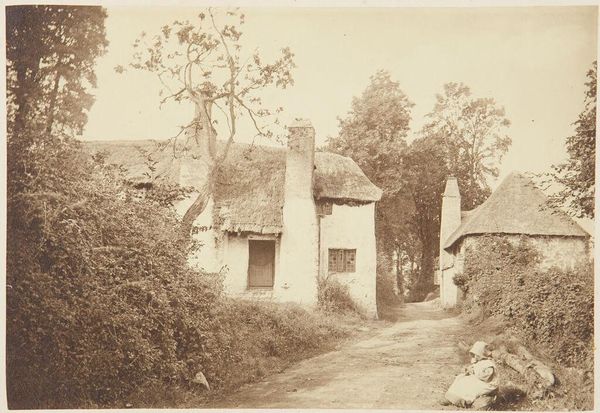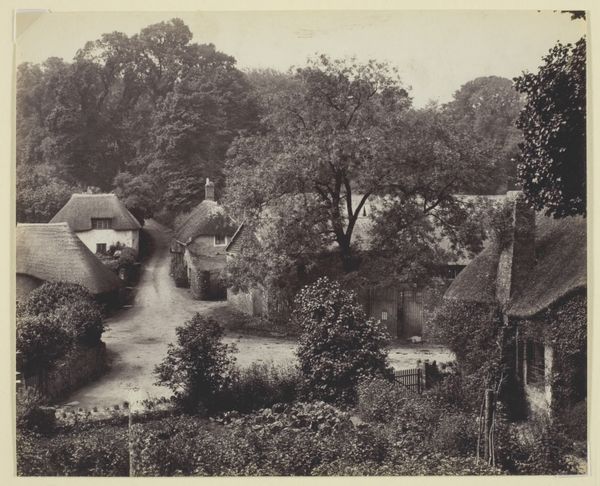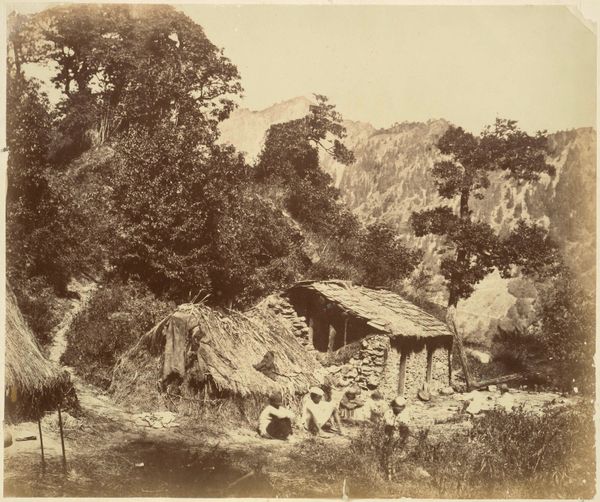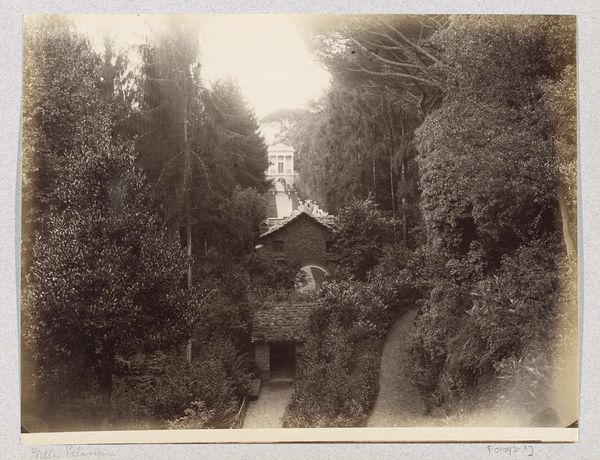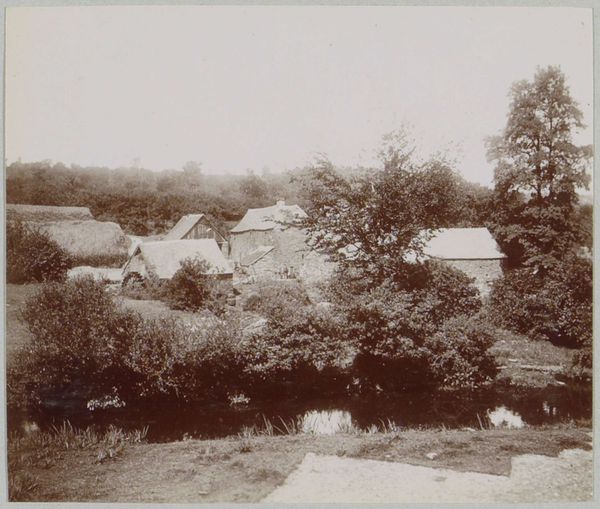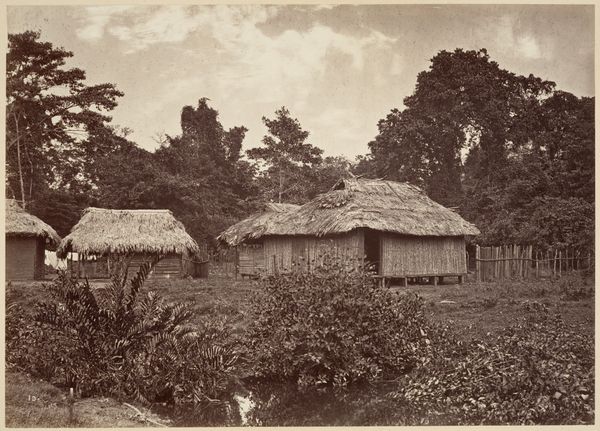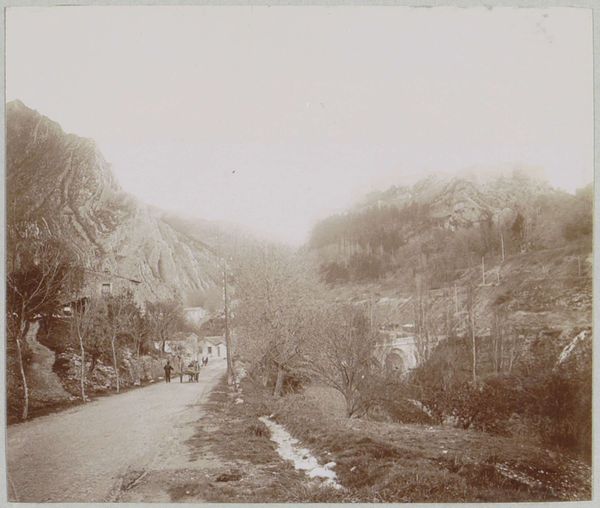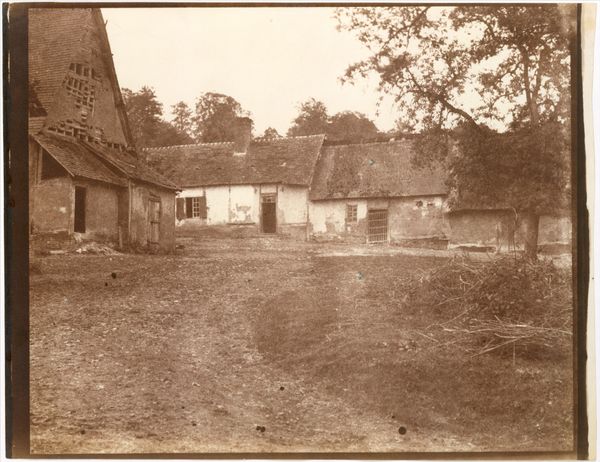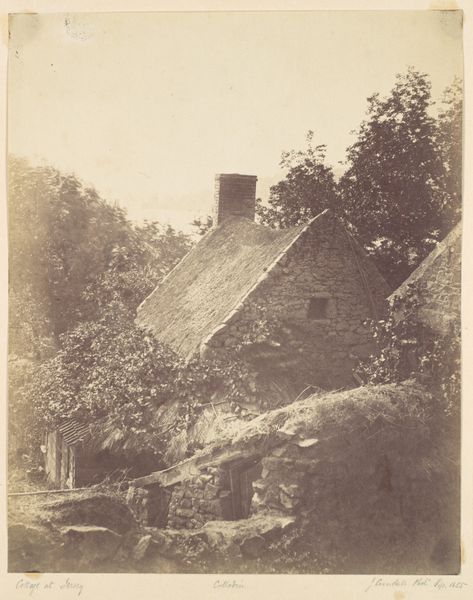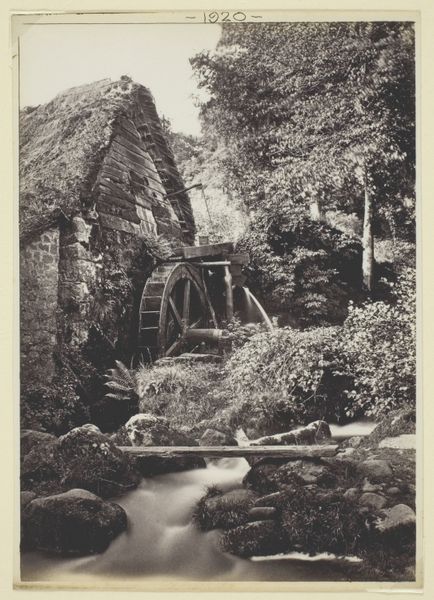
Copyright: Public Domain
Editor: This is Francis Bedford's "Chargford, Holy S. Mill," taken in the 1870s. The subdued tones and detailed textures create a sense of serenity, yet also a hint of industriousness. How do you interpret this work from a formalist perspective? Curator: The composition directs our eye through a series of carefully orchestrated planes. Note how the textural contrasts – the rough thatch against the smooth water, the angular building versus the organic foliage – engage in a dialectic. Bedford masterfully manipulates light and shadow, not for mere representation, but to delineate form and depth, wouldn’t you agree? Editor: Yes, absolutely. The interplay of light really defines the forms, especially highlighting the mill's structure. But how does the artist's choice of perspective impact the overall meaning? Curator: The selected vantage point positions us, the viewers, at a critical distance. We're neither too close to lose sight of the mill’s relationship with its surroundings, nor too far to miss the intricate details of its construction. The artist encourages a contemplative assessment of form, independent of social or political contexts, wouldn't you observe? Editor: It certainly emphasizes a purely aesthetic engagement. I appreciate seeing how the contrasting textures contribute to the visual dynamic. Curator: Indeed. By stripping away external narratives and concentrating on the intrinsic qualities of form and light, Bedford presents an idealized space where the relationship between artifice and nature achieves a perfect equilibrium. I think the work has invited us to explore photographic language beyond its referential capacity. Editor: It's fascinating to see how a formalist lens can reveal such depth. I'll definitely consider Bedford's technique in my own artistic exploration.
Comments
No comments
Be the first to comment and join the conversation on the ultimate creative platform.

